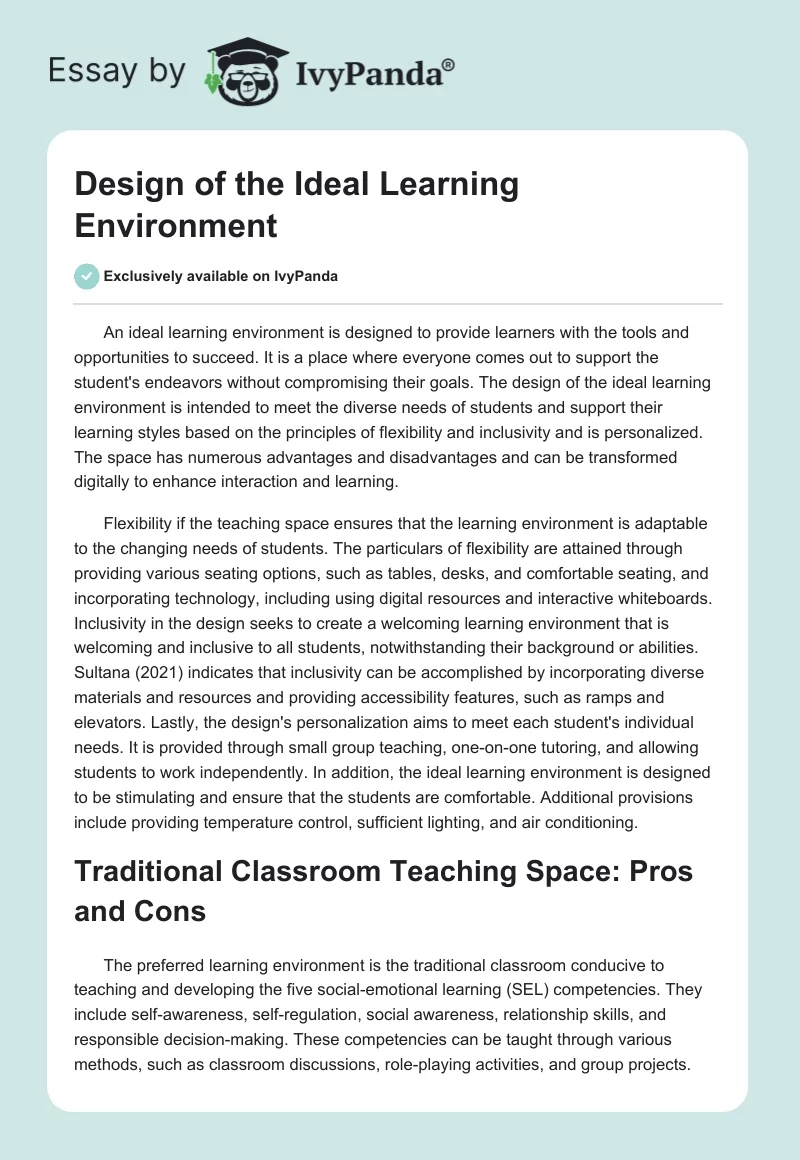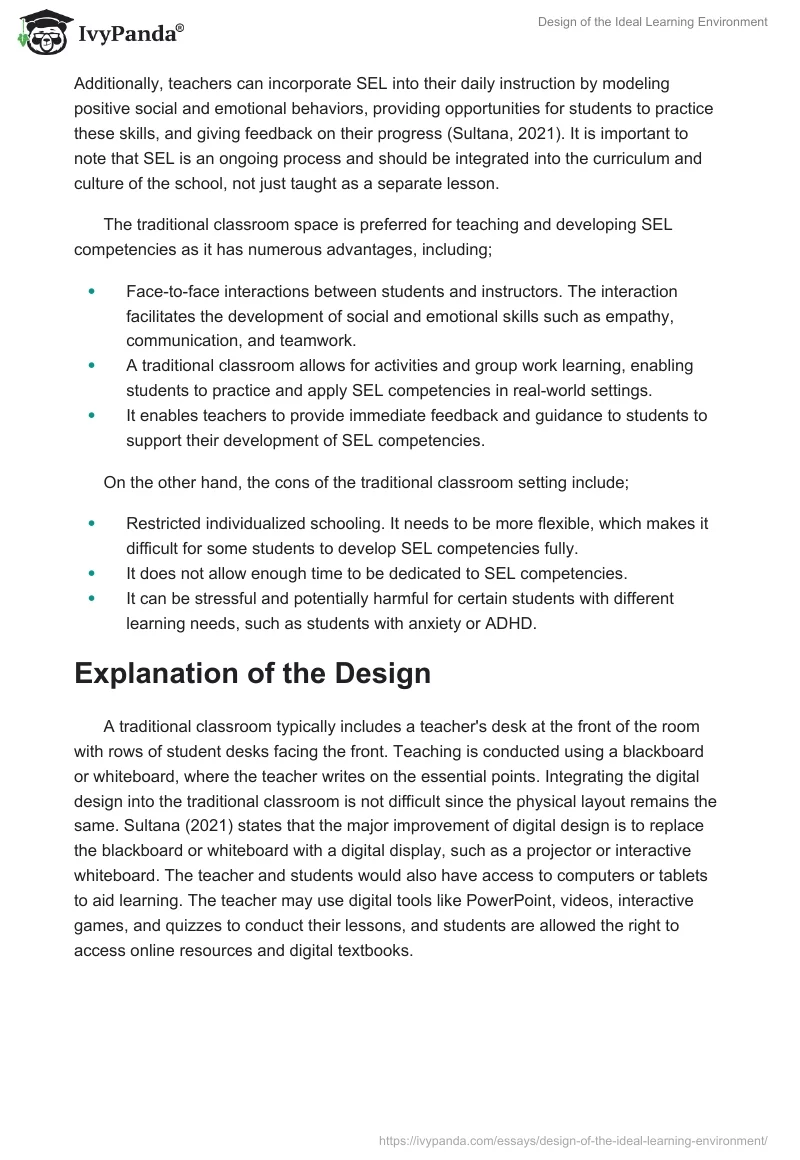An ideal learning environment is designed to provide learners with the tools and opportunities to succeed. It is a place where everyone comes out to support the student’s endeavors without compromising their goals. The design of the ideal learning environment is intended to meet the diverse needs of students and support their learning styles based on the principles of flexibility and inclusivity and is personalized. The space has numerous advantages and disadvantages and can be transformed digitally to enhance interaction and learning.
Flexibility if the teaching space ensures that the learning environment is adaptable to the changing needs of students. The particulars of flexibility are attained through providing various seating options, such as tables, desks, and comfortable seating, and incorporating technology, including using digital resources and interactive whiteboards. Inclusivity in the design seeks to create a welcoming learning environment that is welcoming and inclusive to all students, notwithstanding their background or abilities. Sultana (2021) indicates that inclusivity can be accomplished by incorporating diverse materials and resources and providing accessibility features, such as ramps and elevators. Lastly, the design’s personalization aims to meet each student’s individual needs. It is provided through small group teaching, one-on-one tutoring, and allowing students to work independently. In addition, the ideal learning environment is designed to be stimulating and ensure that the students are comfortable. Additional provisions include providing temperature control, sufficient lighting, and air conditioning.
Traditional Classroom Teaching Space: Pros and Cons
The preferred learning environment is the traditional classroom conducive to teaching and developing the five social-emotional learning (SEL) competencies. They include self-awareness, self-regulation, social awareness, relationship skills, and responsible decision-making. These competencies can be taught through various methods, such as classroom discussions, role-playing activities, and group projects. Additionally, teachers can incorporate SEL into their daily instruction by modeling positive social and emotional behaviors, providing opportunities for students to practice these skills, and giving feedback on their progress (Sultana, 2021). It is important to note that SEL is an ongoing process and should be integrated into the curriculum and culture of the school, not just taught as a separate lesson.
The traditional classroom space is preferred for teaching and developing SEL competencies as it has numerous advantages, including;
- Face-to-face interactions between students and instructors. The interaction facilitates the development of social and emotional skills such as empathy, communication, and teamwork.
- A traditional classroom allows for activities and group work learning, enabling students to practice and apply SEL competencies in real-world settings.
- It enables teachers to provide immediate feedback and guidance to students to support their development of SEL competencies.
On the other hand, the cons of the traditional classroom setting include;
- Restricted individualized schooling. It needs to be more flexible, which makes it difficult for some students to develop SEL competencies fully.
- It does not allow enough time to be dedicated to SEL competencies.
- It can be stressful and potentially harmful for certain students with different learning needs, such as students with anxiety or ADHD.
Explanation of the Design
A traditional classroom typically includes a teacher’s desk at the front of the room with rows of student desks facing the front. Teaching is conducted using a blackboard or whiteboard, where the teacher writes on the essential points. Integrating the digital design into the traditional classroom is not difficult since the physical layout remains the same. Sultana (2021) states that the major improvement of digital design is to replace the blackboard or whiteboard with a digital display, such as a projector or interactive whiteboard. The teacher and students would also have access to computers or tablets to aid learning. The teacher may use digital tools like PowerPoint, videos, interactive games, and quizzes to conduct their lessons, and students are allowed the right to access online resources and digital textbooks.
Reference
Sultana, P. (2021). Shifting of language teaching methodology from traditional classroom to virtual classroom. The Creative Launcher, 6(4), 88–95. Web.


